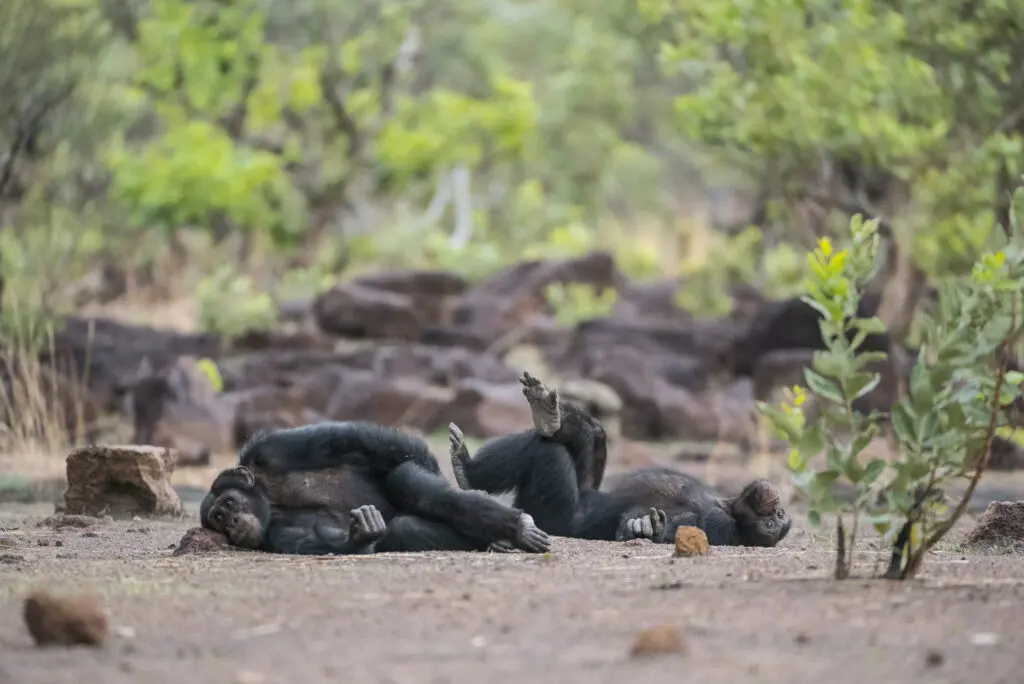Spend a Day Tracking Chimpanzees

Some see chimpanzees as invariably belligerent creatures. They kick, bite, and sometimes kill fellow chimps in disputes over mates, food, and territory. While researchers mostly try to avoid casting moral judgments on animal behavior, aspects of their work can still creep into public opinion, pinning a bad reputation onto chimps.
This impression mostly stems from popular accounts of specific research that focused on aggression and male hierarchy in a few chimp (Pan troglodytes) communities in Uganda and Tanzania. It’s not the whole story for those chimp groups or the species in general.
Through my fieldwork in Fongoli, Senegal, I have witnessed P. troglodytes’ more sociable side—and lives that are variably playful, restful, stressful, and fascinating.
Join me for a day of field research with the Fongoli chimps. Following a group from dawn to dusk, my videos show chimps swinging and splashing for fun, communicating with gestures, and fashioning tools to capture snacks. The footage reflects the rhythm of their daily lives—and what it’s like for me and other researchers who trail them.

































